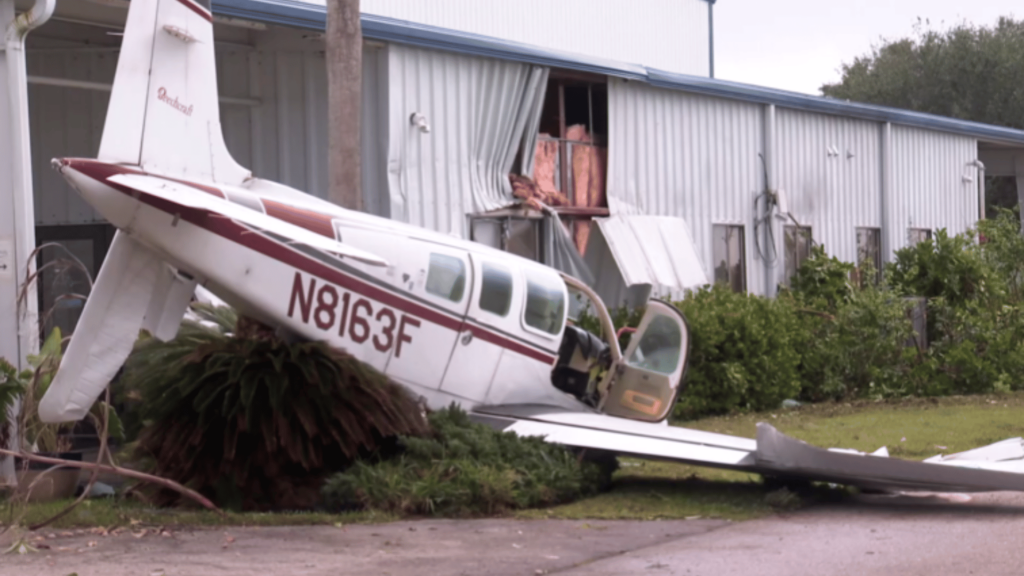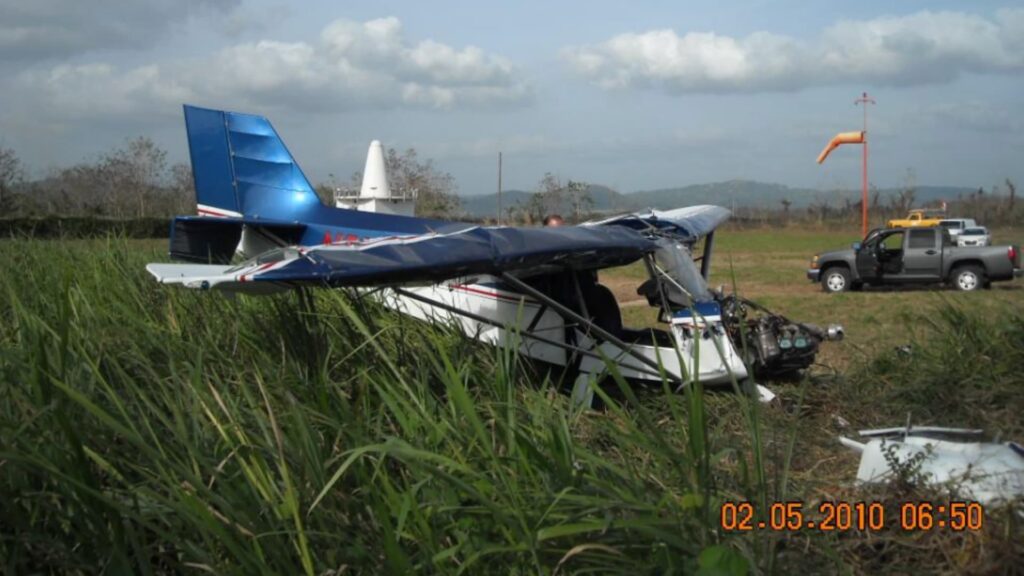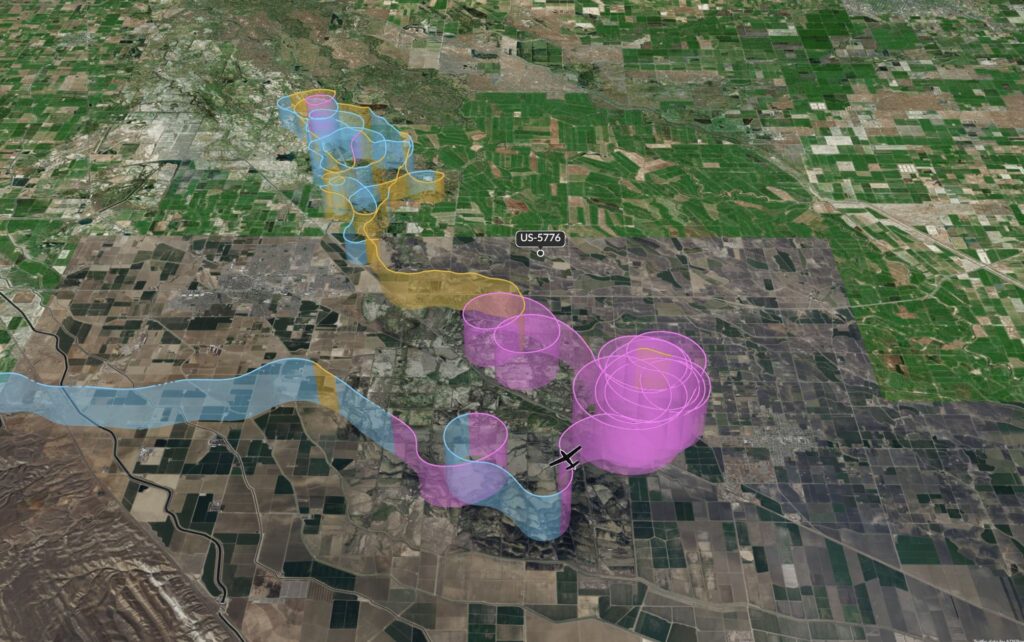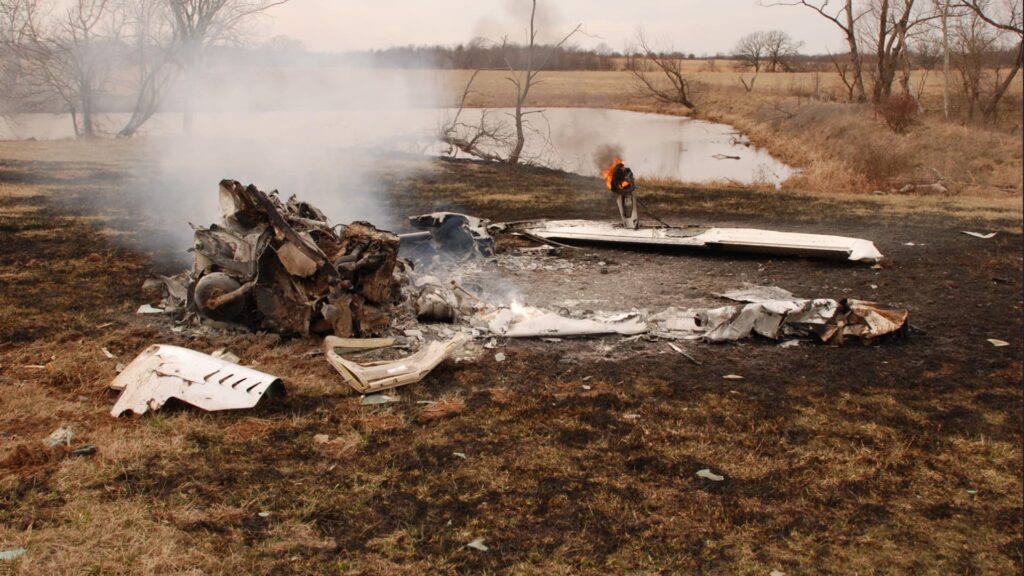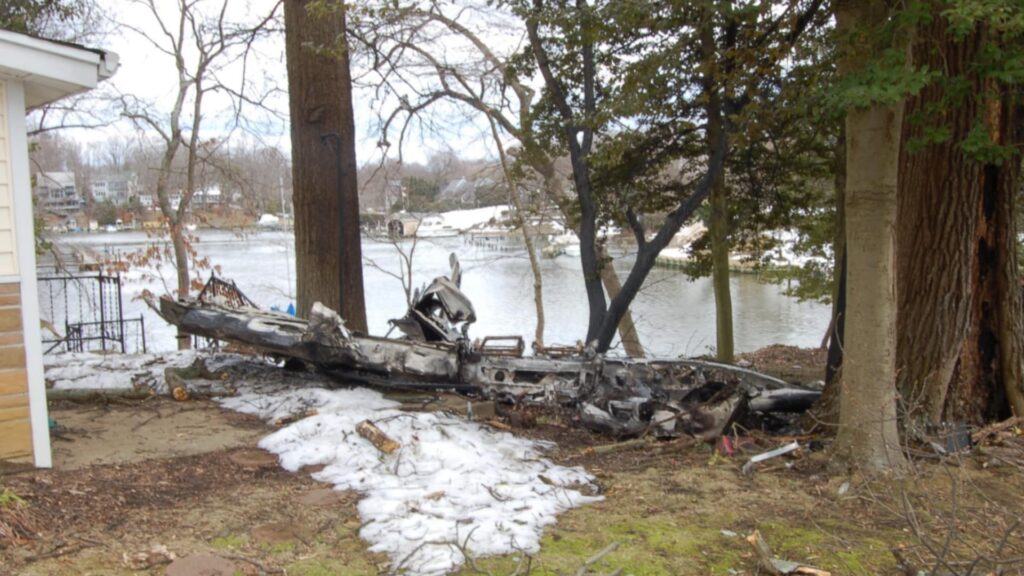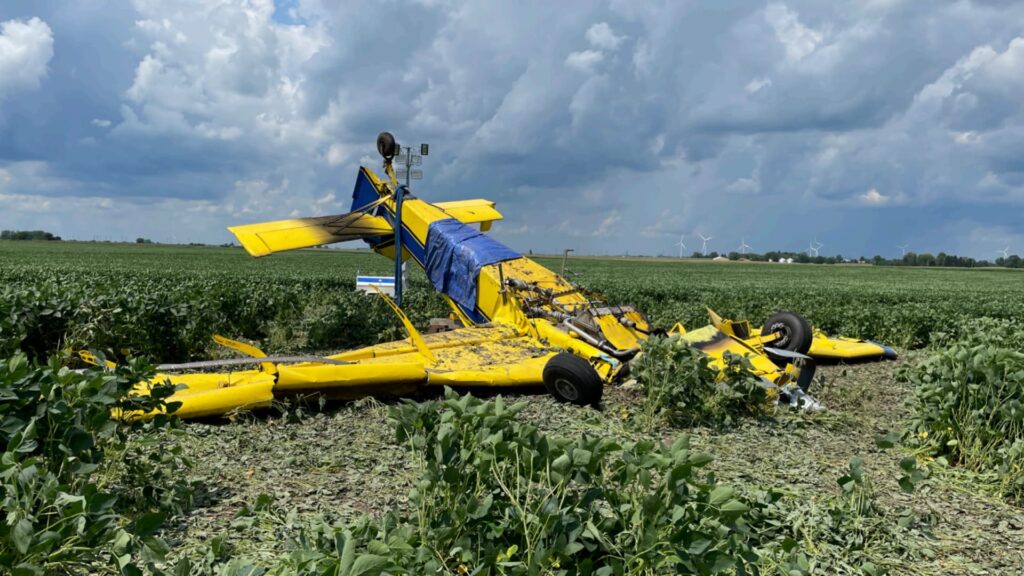On New Year’s Day 2025, a late-night flight out of Naples, Florida, took a terrifying turn. A Beech A36 Bonanza (N8163F) lost engine power just after takeoff from Naples Municipal Airport (APF). The pilot and three passengers survived without injury, but the aircraft struck buildings before coming to rest in a grassy area beyond the runway.
A Late-Night Departure and an Unexpected Change
The pilot planned a flight from Naples (APF) to Bartow Executive Airport (BOW) under instrument flight rules (IFR). He filed a flight plan with Leidos Flight Service and received a confirmation email. Later, a second email notified him of a route modification.
Since the Naples control tower was closed at that hour, the pilot coordinated his clearance via phone with Miami ARTCC. He received takeoff approval from runway 05, with a void time of 01:14 AM.
But the actual departure didn’t happen until 01:20 AM—six minutes after the clearance had expired. The aircraft accelerated normally, and after liftoff, the pilot retracted the landing gear. That’s when disaster struck.
Engine Failure at Low Altitude
As the aircraft climbed between 100-200 feet above the ground, the engine suddenly quit.
The pilot felt the left wing starting to stall. He quickly pushed the control wheel forward to stabilize the plane. But with no power and limited altitude, the aircraft was already drifting off course—toward obstacles.
Seconds later, the left wing clipped a building, spinning the aircraft 180 degrees. It struck another structure before crashing upright, facing the opposite direction.
Despite the violent impact, everyone on board escaped unharmed.
The Aftermath and Wreckage Findings
After the crash, the pilot contacted Miami ARTCC to report the accident.
Investigators found that the Bonanza had hit a hangar, an airport fence, and a road before coming to rest near a maintenance facility. Propeller marks on the ground suggested the engine was still rotating, but it wasn’t producing power.
Aircraft Damage
- Left Wing: Crushed, wrinkled, and bent nearly 90° upward.
- Right Wing: Wrinkled with a 15° upward bend near the tip.
- Fuselage: Torn in multiple places, with compression damage.
- Horizontal Stabilizer: The left side nearly detached, with part of the elevator missing.
- Propeller: Three blades bent and gouged, one missing a tip.
- Engine: Torn from its mounts, found five feet from the nose.
The cause of the power loss remains unknown..
Weather Conditions
At 01:30 AM—just 10 minutes after the crash—weather at Naples Airport was reported as:
- Visibility: 1/4 mile in fog
- Vertical visibility: 100 feet
- Wind: Calm
Thick fog and darkness would have made it nearly impossible for the pilot to see obstacles, increasing the danger of an emergency landing.
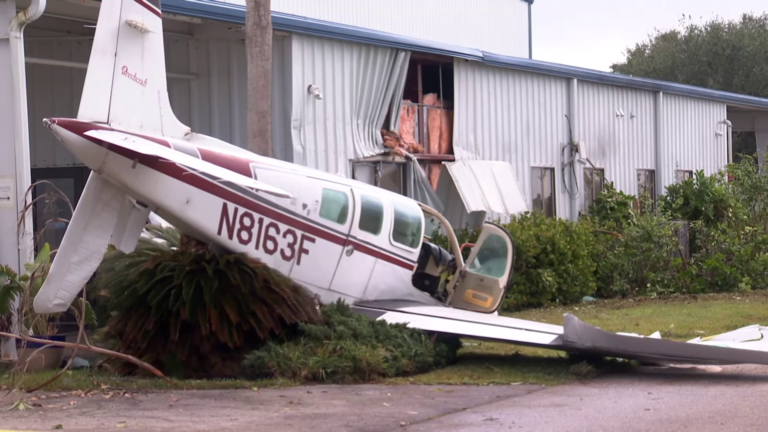
Key Safety Takeaways
1. Why Depart in Dangerous Conditions?
The pilot left at 1 AM in near-zero visibility. Was the trip urgent enough to justify flying in such poor conditions? Departing after an IFR clearance had expired also added unnecessary risk.
2. Stall Awareness Saves Lives
The pilot reacted immediately to the left-wing stall. This quick response likely prevented a total loss of control. Training for engine-out scenarios is essential.
3. Engine Failure After Takeoff (EFATO) Is High-Risk
Losing power at low altitude leaves little time for reaction. Pilots should always have an emergency landing plan in mind before takeoff—especially at night or in IFR conditions.
4. Night Flying Adds Complexity
Low visibility makes forced landings even harder. Pilots should carefully assess weather risks and their personal limits before flying at night.
5. Pre-Flight Inspections Matter
While the cause of the failure is still unknown, proper fuel management, mixture settings, and engine checks are vital to preventing power loss.
Final Thoughts
While the cause of the engine failure is still under investigation, this accident serves as a stark reminder of the challenges pilots face when things go wrong right after takeoff. The pilot’s quick decision-making prevented a tragic outcome, demonstrating the importance of situational awareness and immediate action in emergencies.
🛩️ Fly safe out there!

